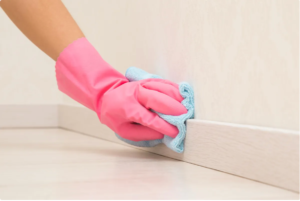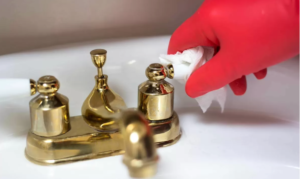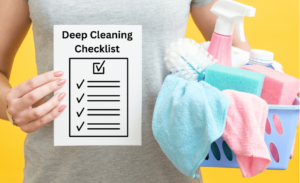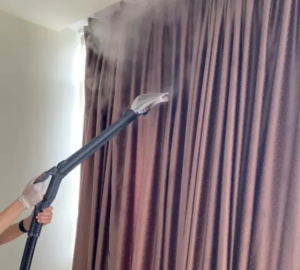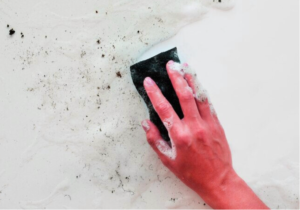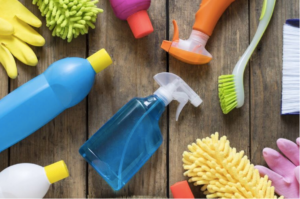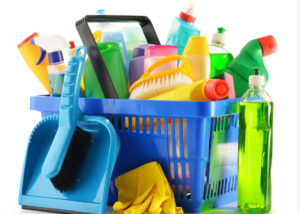
The Pros and Cons of End of Tenancy Cleaning Options
The Pros and Cons of End of Tenancy Cleaning Options End of tenancy cleaning is a crucial part of moving out of a rented property. Whether you’re a tenant aiming to get your deposit back, a landlord preparing a property for new tenants, or a property manager ensuring consistency across rentals, the cleanliness of the premises plays a significant role. Tenants are generally expected to leave the property in the same condition as it was when they moved in. This necessity gives rise to a major decision: should you hire professional cleaners or tackle the task yourself? Below is a detailed look at the pros and cons of the different end of tenancy cleaning options to help you make the best choice for your situation. Hiring a Professional End of Tenancy Cleaning Service Pros: Thorough and Efficient CleaningProfessional cleaning companies specialize in deep cleaning. They come equipped with industrial-grade equipment, experienced staff, and effective cleaning agents that are not typically available to the average person. This means they can clean more thoroughly and efficiently than most individuals. Saves Time and EnergyMoving out is stressful and time-consuming. Hiring professionals allows you to focus on packing, paperwork, and the transition, rather than scrubbing floors and descaling taps. It’s especially beneficial if you’re on a tight schedule. Increases the Likelihood of Getting Your Deposit BackA spotless property significantly improves your chances of receiving your full deposit. Many landlords and letting agents expect a professional standard of cleanliness and may deduct money for any areas not cleaned to their expectations. Receipt and Guarantee ProvidedMany professional services offer a cleaning receipt and guarantee. If the landlord or agency finds any issues, the cleaning company often returns free of charge to address them. This is a valuable safety net. Compliance with Letting Agent ChecklistsProfessional cleaners are familiar with the standard checklists used by letting agencies and landlords. They know what needs to be cleaned and how, ensuring nothing is missed. Cons: CostProfessional cleaning can be expensive. Prices vary based on the size of the property, its condition, and the location, but it typically ranges from £100 to £400 or more. For some tenants, this cost may be a significant burden. Scheduling IssuesYou’ll need to schedule the cleaning service around your moving timeline and their availability. During peak times (e.g., end of the month), bookings may be limited or more expensive. Risk of Unsatisfactory WorkNot all cleaning companies deliver on their promises. Poor quality service or a lack of attention to detail could lead to complaints from landlords, and some less reputable companies may be difficult to get back for re-cleans. Limited ControlYou won’t have control over the cleaning methods or products used unless you specify them beforehand, which can be a concern for those with allergies, pets, or eco-conscious preferences. DIY End of Tenancy Cleaning Pros: Cost-EffectiveDoing the cleaning yourself is the cheapest option. You’ll only pay for cleaning supplies, saving a substantial amount compared to hiring professionals. In 2024, 30% of consumers purchased more private-label household products compared to the previous year. Control Over Products and MethodsYou can choose eco-friendly or allergy-safe products and take your time to ensure everything meets your standards. This control may be reassuring, especially for families with specific health needs. FlexibilityYou can clean at your own pace and on your own schedule. This flexibility is particularly useful if your moving dates change or if you prefer to clean as you pack. Opportunity to Spot RepairsWhile cleaning, you may notice maintenance issues—scuffed paint, loose fixtures, or damaged tiles—that you can address before your landlord does. This proactive approach can help safeguard your deposit. Cons: Time-Consuming and Physically DemandingEnd of tenancy cleaning is more intensive than regular cleaning. It involves tasks like cleaning behind appliances, washing windows, removing limescale, and cleaning ovens—often under time pressure. May Lack the Professional TouchDespite your best efforts, DIY cleaning may fall short of professional standards. Some areas may be overlooked, or the results may not be as polished, which could lead to deductions from your deposit. No Guarantee or Re-clean OptionIf your landlord isn’t satisfied, you’ll have to redo the work yourself or hire a cleaner at the last minute. This can be stressful, particularly if you’re already juggling other responsibilities. Equipment LimitationsYou might not have access to specialized equipment (e.g., steam cleaners, carpet washers), making it harder to achieve deep cleanliness, especially for carpets and upholstery. Hybrid Approach: Partial DIY and Professional Help Pros: Balanced Cost and QualityHiring professionals for the hardest tasks—like carpet or oven cleaning—while handling the rest yourself can save money and still ensure a high-quality result. Customizable ServiceYou can tailor the cleaning to your needs. If you’re confident cleaning general surfaces but not comfortable cleaning windows or bathrooms, a hybrid approach offers flexibility. Less Physical StrainOutsourcing the most demanding tasks helps reduce fatigue and makes the process more manageable, especially for elderly tenants or those with physical limitations. Cons: Coordination RequiredYou’ll need to manage your own cleaning while also coordinating with the professionals. Miscommunication or scheduling conflicts can complicate the process. Deposit Still at RiskIf your own cleaning falls short of the landlord’s expectations, you could still face deductions. Ensure you understand which tasks are covered by the professionals and which are your responsibility. Can Still Be CostlyWhile cheaper than full professional services, hiring cleaners for certain tasks still involves a financial outlay. Which Option Is Best? The right choice depends on your budget, available time, cleaning skills, and the expectations of your landlord or letting agent. If your lease specifies professional cleaning or if the inventory check is strict, hiring a service might be worth the investment. If you’re confident in your cleaning abilities and want to save money, a DIY approach could be suitable. For many, the hybrid method offers a good balance of cost and convenience. Final Thoughts End of tenancy cleaning can make a significant difference in how smoothly your move goes and whether you retrieve your full deposit. Weigh the pros and cons of each


